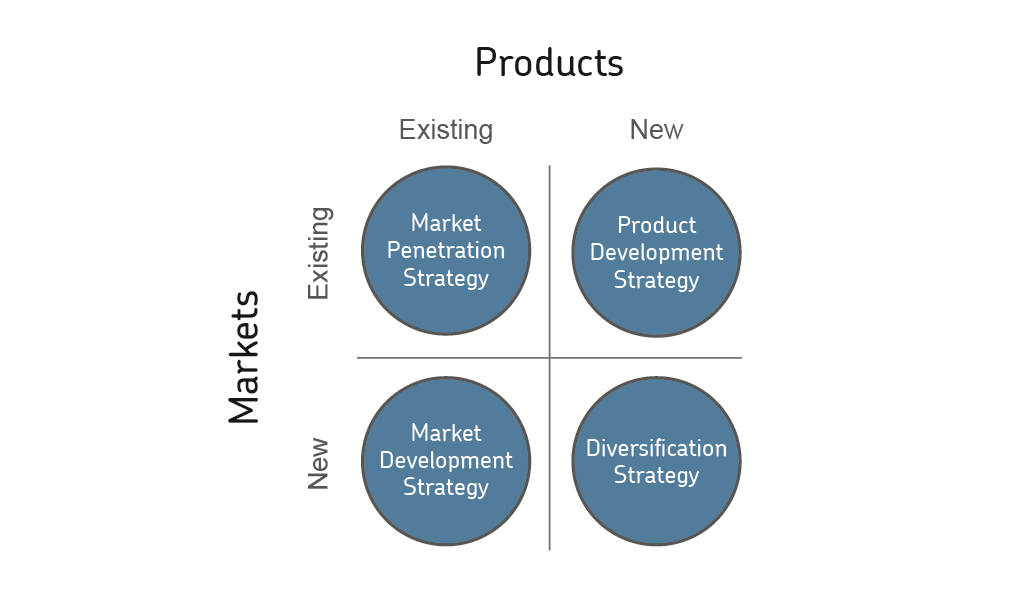Specifications that use this resource:
Teaching guide: Ansoff matrix model
Use this teaching guide in the classroom to engage your students, contextualise the model/theory in real-world business and prepare them for the exam.
Section 3.8.1 Strategic direction: choosing which markets to compete in and what products to offer.
Overview
The Ansoff matrix model sets out strategic options for a business. It classifies strategies based on the products offered and the markets in which the business competes.
Model/theory

Market penetration
In some ways this is the least risky strategy because it involves selling more of the existing products of the business. This may involve more marketing activities to generate more sales and possibly a bigger market share. However, this strategy will only work if the demand is there. It also means the business is focusing on the same customers with the same products.
Market development
This strategy takes existing products and targets new customer segments. These may be in different regions or simply be a different target group, eg a different demographic, income or behavioural segment. A risk here is the business may not have the same knowledge of this new segment as it does of its existing segment and may not have the resources or networks to meet its needs effectively.
New product development
This strategy develops new products for existing customers. This could be, for example, an improvement to the service provided or a new physical product. The risk here is in developing a new product; many new product ideas never reach the market. Of those that do, many fail.
Diversification
This is a risky strategy in some ways because it involves new products and markets. However, it does mean the business is no longer reliant on its existing products and markets which helps to spread the risks – if demand falls in one market, it has another where it is selling.
Key points
The Ansoff matrix outlines possible strategies for the business. Managers have to make the right choices, manage the risk and ensure they implement the strategy effectively.
When you can use this
- Use to highlight different strategic options facing a business.
- Analyse strategies of businesses using this framework.
- Compare and contrast different strategic options.
- Consider what would prompt a new strategy.